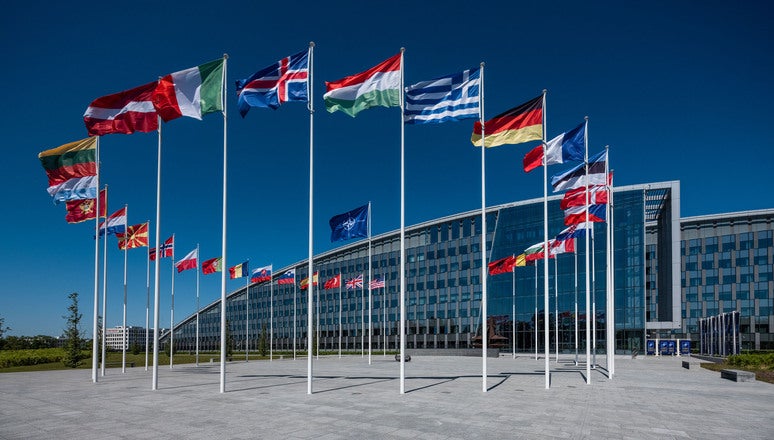
Several nations and NATO members have pledged to provide both lethal and logistical military assistance to the Ukrainian government. Here is a brief assessment of the numerous foreign military support packages the Ukrainian Military received.
The United States
The US has been providing military assistance to Ukraine since the Russian annexation of Crimea in 2014, originally providing non-lethal support including body armour, logistical supplies and training. Since authorizing the provision of lethal military equipment to Ukraine in 2017, the US has supplied Ukrainian forces with small arms, ammunition, anti-tank (AT) and anti-aircraft (AA) systems, unmanned aerial systems (UAS) and communications equipment. Two notable systems are the FIM-92 Stinger AA missile and FGM-148 Javelin, the latter being an advanced AT weapon which deploys a fire-and-forget missile optimized to destroy armoured vehicles. The US government has provided over $1 billion in military assistance to the Ukrainian government over the past year.
How well do you really know your competitors?
Access the most comprehensive Company Profiles on the market, powered by GlobalData. Save hours of research. Gain competitive edge.

Thank you!
Your download email will arrive shortly
Not ready to buy yet? Download a free sample
We are confident about the unique quality of our Company Profiles. However, we want you to make the most beneficial decision for your business, so we offer a free sample that you can download by submitting the below form
By GlobalDataThe United Kingdom
The British government had closely aligned its policy with that of its US counterparts, providing non-lethal military assistance from 2015 including logistical supplies and specialised training. The British government has since mirrored the US’ lethal aid policy and provided the Ukrainian Army with 2,000 next-generation light anti-tank (NLAW) laser-guided missiles. These have appeared prominently in combat footage and various photographs currently circulating in the media.
Canada
The Canadian government has largely followed the US’ example in recent days and agreed to a comprehensive military assistance package including body armour, helmets, gas masks and night vision systems, as well as a $100 million humanitarian assistance package. As of 1 March 2022, the Canadian government has committed to providing additional lethal military equipment to the tune of 100 Carl-Gustaf recoilless AT rifles and 2,000 AT rockets.
The European Union
EU leaders have always attempted to steer the organization away from direct participation in military operations. However, the invasion of Ukraine and the subsequent threat to European security has caused the same leaders to dramatically rethink the bloc’s defensive policies. EU members have agreed to finance the purchase of €450 million worth of arms and equipment to support the Ukrainian government, which will most likely include small arms, ammunition, personal protective equipment (PPE) and AT/AA systems.
Germany
Successive German governments have strived to limit their nation’s involvement in armed conflicts over the past three decades, with national safeguards to prevent the transfer of German military equipment to active conflict zones. Consequently, the German government’s decision to overturn three decades of policy by providing military aid to Ukraine and investing €100 billion in domestic defence represents an existential shift in the nation’s foreign policy stance. Earlier this weekend, German Chancellor Olaf Scholz announced that Germany would provide 1,000 AT weapons systems and 500 Stinger missiles to bolster Ukrainian defences.
France
The French government has historically supported the Ukrainian government. It provided $60 million worth of lethal military equipment in 2021. The country recently announced an additional support package worth an estimated €300 million which includes AT, AA and ‘digital weapons systems’.
The Netherlands
The Dutch government has announced that it would supply Ukraine with 200 Stinger AA missiles, 50 Panzerfaust-3 AT weapons and 400 AT rockets. It may even deploy Patriot missiles to Slovakia as part of the NATO Rapid Response Force.
Norway and Denmark
Norway has pledged to send some 2,000 M-72 disposable anti-tank missile launchers, as well as various pieces of personal protective equipment including helmets and body armour. The Danish government has recently announced that it would supply 2,700 unspecified AT systems to Ukrainian forces – that is in addition to the contributions it would be making as an EU member state.
Finland and Sweden
Though not a NATO member, Finland was one of the first nations to rescind their neutrality pledges, with the Finnish government announcing that it would provide lethal aid including 2,500 assault rifles, 1,500 rocket launchers, 150,000 rounds of ammunition and 70,000 field rations to Ukraine. Sweden, another non-NATO country, has followed Finland’s suit by breaking their traditions of neutrality to supply Ukrainian forces with an additional 5,000 AT systems, most likely Carl-Gustaf or NLAW weapons systems manufactured by Swedish firm Saab.
Eastern Europe
The Czech government announced that it would supply lethal aid in the form of 4,000 mortar systems, 7,000 assault rifles, 3,000 light machine guns, 30,000 pistols, an unspecified amount of sniper rifles and 500,000 rounds of ammunition.
The Romanian government pledged $3.3 million worth of material including PPE, fuel and medical supplies. The Baltic states of Estonia, Latvia and Lithuania had already supplied Ukraine with lethal aid prior to the invasion and have agreed to continue to provide support. The significant amount of lethal aid includes Javelin AT missiles from Estonia, while Latvia and Lithuania supplied unspecified amounts of Stinger AT missiles.
Overall, the initial shock of a Russian invasion in Europe has given way to a concerted effort by Western and European leaders to support the Ukrainian government whilst simultaneously shoring-up their own defences to deter further Russian military aggression. This reinvigoration of the European security apparatus will likely drive significant growth in the European and global defence markets in the coming years as nations seek to re-define their security posture for the 21st century.
Written for Army Technology by GlobalData land defence analyst Tristan Sauer
In-depth articles on this topic and others can be found at globaldata.com








